Gluten-Free Cheesecake
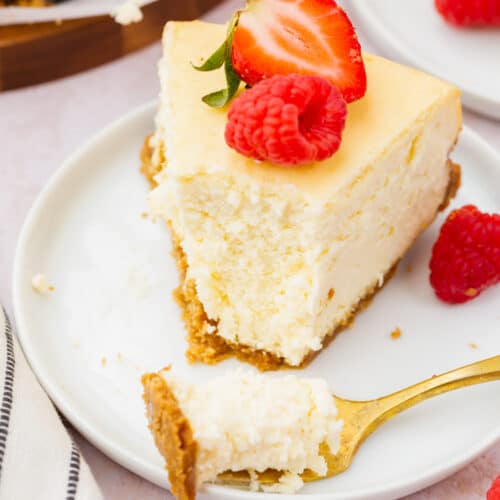
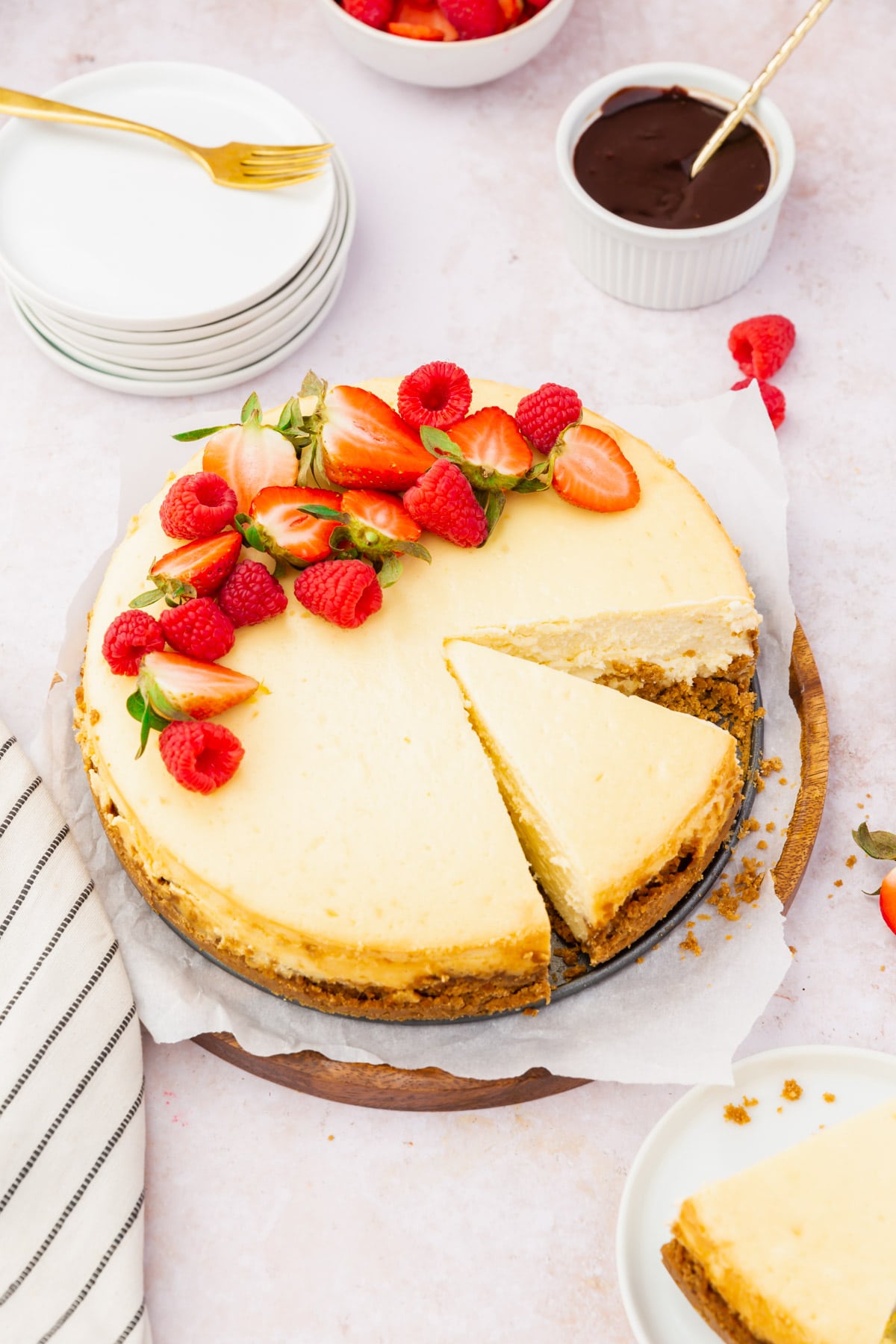
Table of Contents
Why this recipe works
This gluten-free cheesecake has a perfectly rich, silky, and creamy filling and a buttery gluten-free graham cracker crust. It’s delicious on its own, but can also be topped with berries, strawberry coulis or even a chocolate drizzle.
This recipe takes a little bit of planning, but if you follow the directions and plan ahead, you will have a picture perfect, classic gluten-free cheesecake every time.
Ingredients
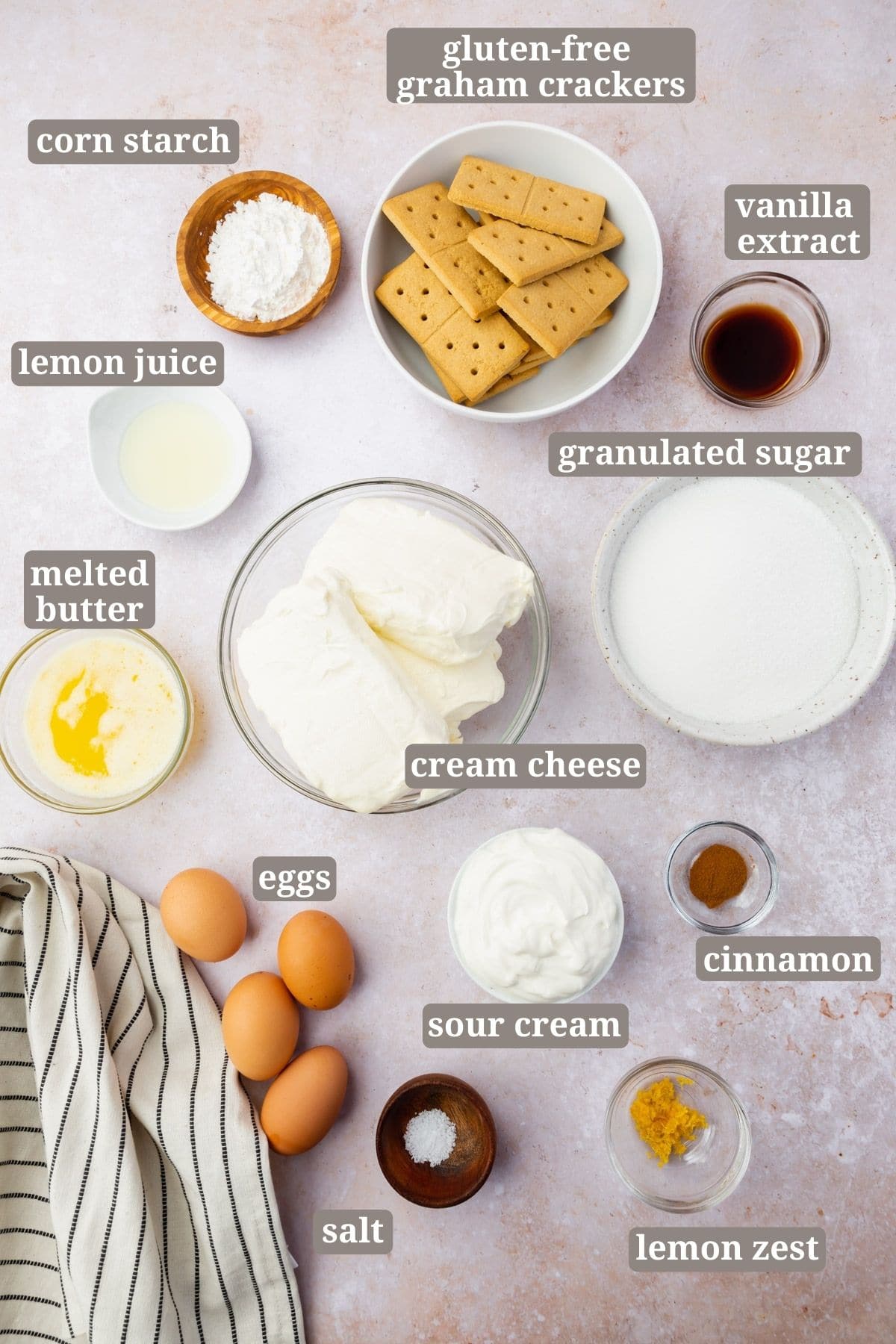
A Dash of Megnut is a participant in the Amazon Services LLC Associates Program, an affiliate advertising program designed to provide a means for us to earn fees by linking to Amazon.com and affiliated sites.
Ingredient Notes
- Graham crackers – I used Kinnikinnick gluten-free graham crackers for this recipe. If you do not need your cheesecake to be gluten-free, you can use any plain graham crackers.
- Cream cheese – I’m the type of person who feels that if you’re going to have dessert, you should have dessert. This recipe will always taste best with full-fat cream cheese. It will creamier, richer and just all around more flavorful.
- Lemon juice and zest – This is not a lemon cheesecake, but the recipe does call for lemon juice and zest. It enhances the flavor in a really tasty way, but you won’t be able to tell that there’s lemon in the cheesecake. So with that said, if you do not have lemon on hand and cannot get any, do not worry about it. You can skip it. If you are able to include it, however, definitely do!
Step-by-Step instructions
- Preheat the oven to 350°F. Butter the bottom and sides of a 9-inch springform pan, then set aside. Add gluten-free graham crackers to a food processor and process until finely ground.
- Pour graham cracker crumbs into a medium sized bowl and whisk together with the granulated sugar, ground cinnamon, and salt.
- Pour the melted butter over the graham cracker mixture and stir until the crust mixture resembles wet sand.
- Press the graham cracker mixture into the bottom of the springform pan and about 1-inch up the sides. I use the bottom of a measuring cup to evenly press the graham cracker crust into the pan.
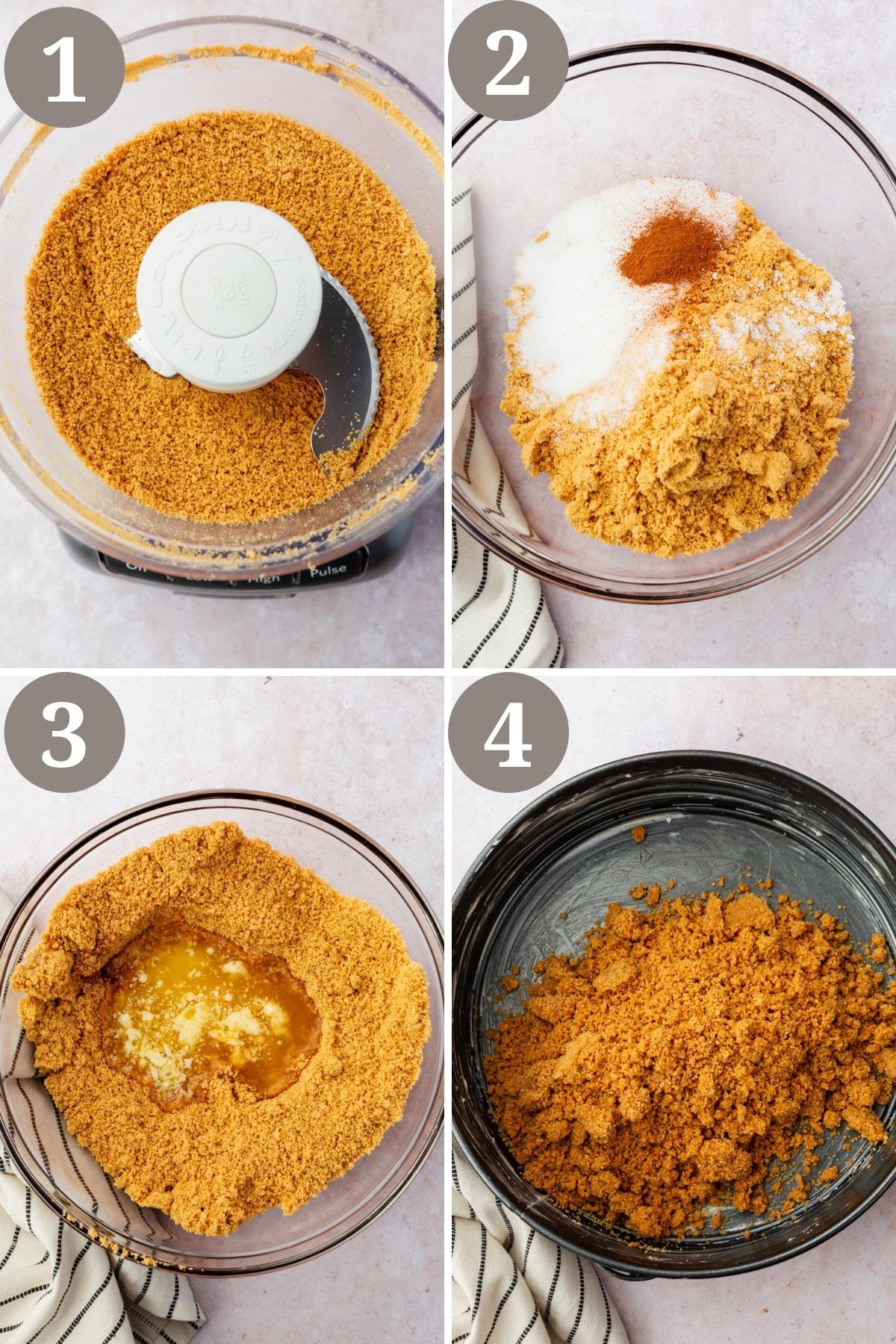
- Bake the crust at 350°F for 9-11 minutes, until the crust is lightly browned and fragrant. Remove from the oven and cool for at least 10 minutes while preparing the filling.
- To make the filling, place the cream cheese and granulated sugar in a large bowl, and beat for 1-2 minutes using an electric mixer until light and smooth.
- Add the sour cream, lemon juice, lemon zest, cornstarch, and vanilla. Still using the electric mixer, mix until completely smooth, scraping down the sides of the bowl as needed with a spatula.
- In a separate bowl or measuring cup, whisk the eggs together using a whisk or fork.
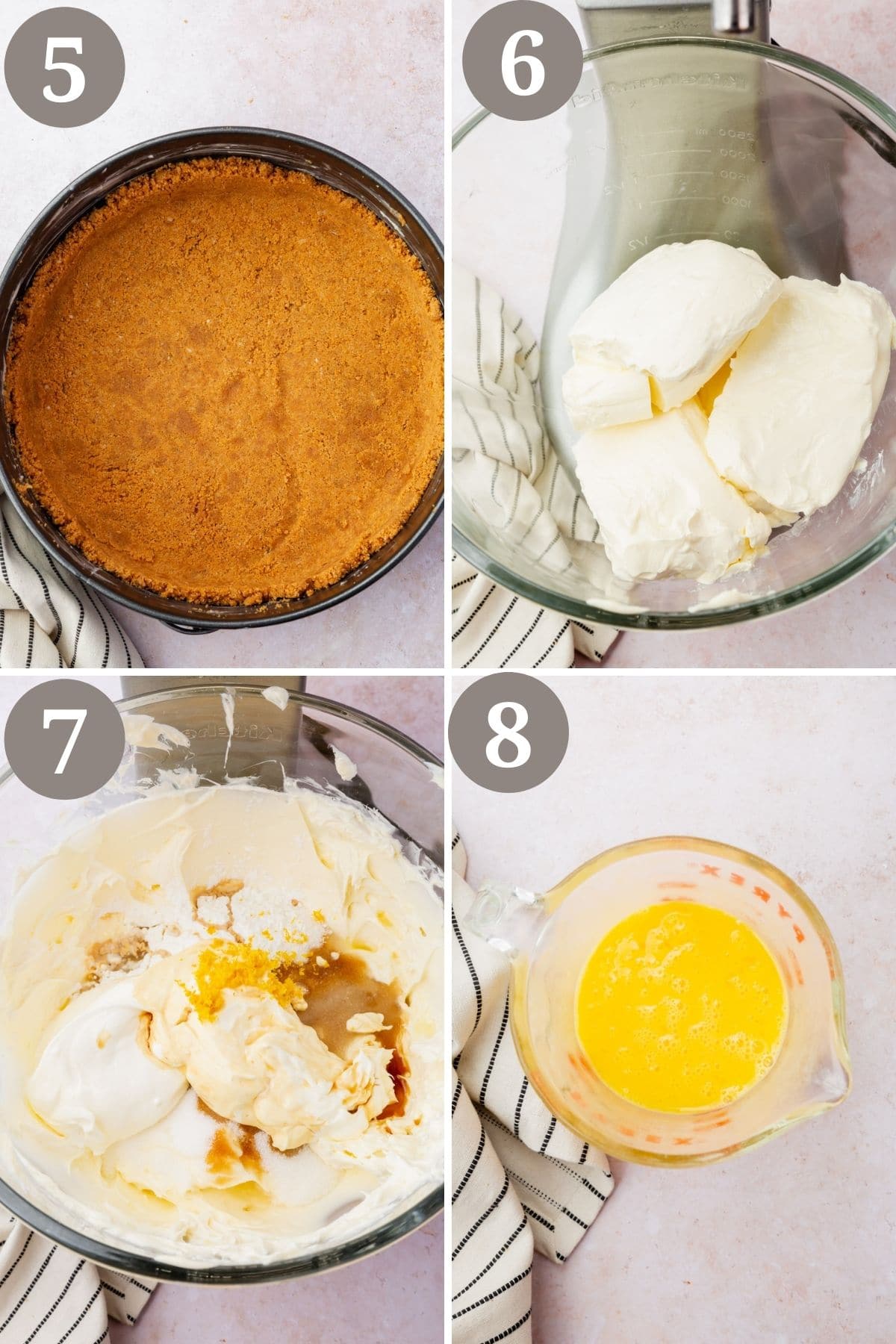
- Add half of the whisked eggs to the cream cheese mixture and mix until just incorporated using the electric mixer. Add the remaining eggs and again mix until just incorporated. Be sure not to overmix or too much air will be incorporated into the filling.
- Pour the cheesecake filling over the crust and smooth with a spatula. Place your cheesecake in the preheated oven and bake for 20 minutes at 350F. Then, lower the temperature to 250F without opening the oven door and bake for another 55-65 minutes, until the edges of the cheesecake are set, but the center 2-inches of the cheesecake is still wobbly. If you stick a thermometer into the center, the internal temperature of the cheesecake should reach 145-150F. Turn off the oven and let the cheesecake sit in the oven for an hour with the door closed.
- Remove the cheesecake from the oven. Run a knife along the edges of the cheesecake to loosen it from the pan. Let the cheesecake sit at room temperature for an hour. Once at room temperature, place the cheesecake in the refrigerator for at least 4 hours before serving.
- Remove the cheesecake from the springform pan and top with berries and chocolate sauce or serve plain. Enjoy!
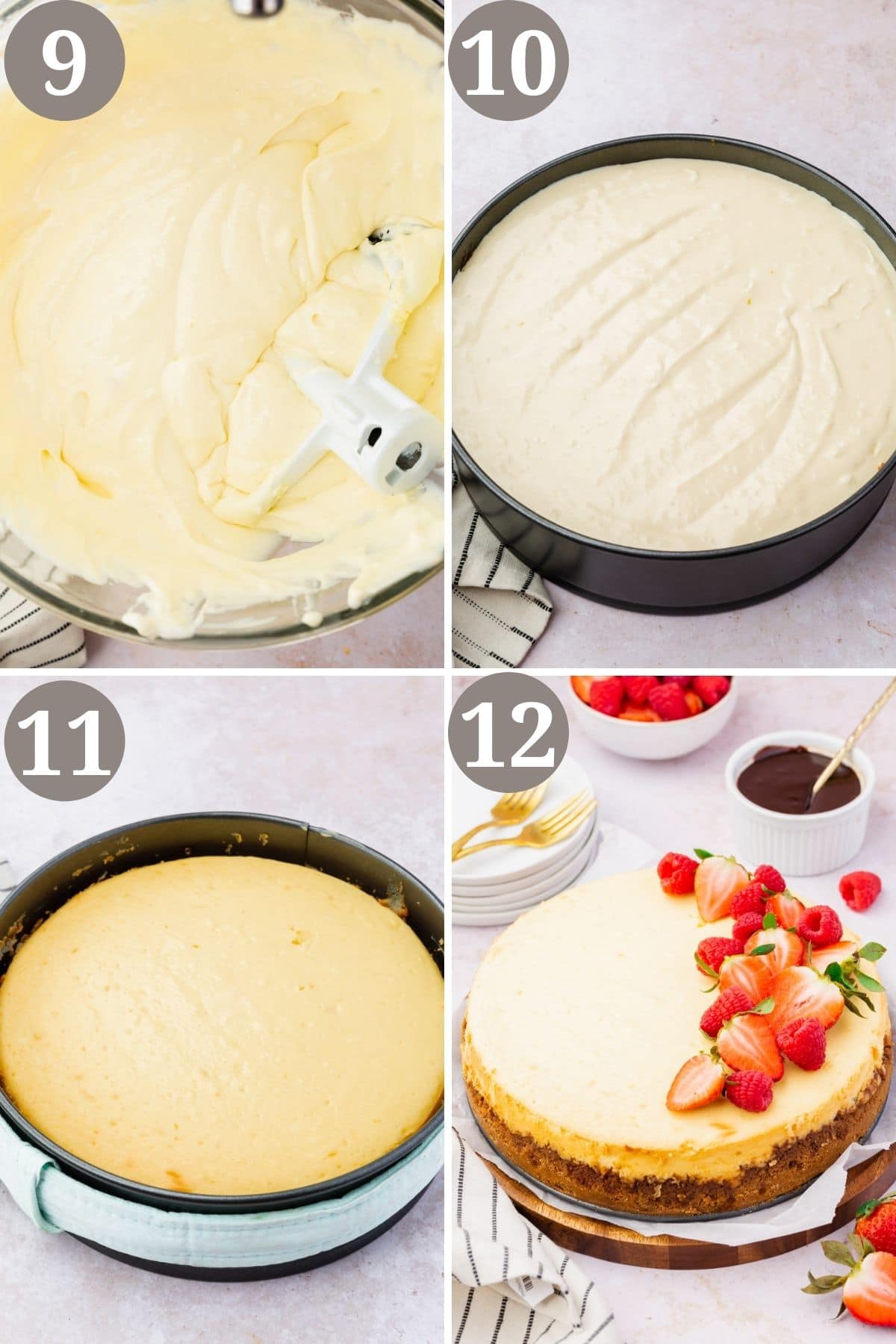
How to keep your cheesecake from cracking
#1 Do not overmix your eggs.
One of the biggest tricks to making sure your cheesecake doesn’t crack is to not overmix the eggs. That’s why I prefer to whisk my eggs separately before adding them to the rest of the cheesecake filling so that once added to the filling, there is minimal whisking to be done.
#2 Use a water bath or cake strip.
Shouldn’t you use a water bath to make cheesecake? Well, you certainly could. But, I find water baths to be a huge hassle. I know my culinary school instructors are probably frowning at me right now. But, for a home baker, a water bath is no small feat when it comes to cheesecake. You have to boil water and pour it into a large baking pan and try not to spill and get any water in the cheesecake. No thank you.
As you can see in my photo collage in step #11, I have a cake strip on my cheesecake. What is a cake strip? Well it’s basically a piece of oven-safe fabric that you soak in water and wrap around your cheesecake. The cake strip helps even out the baking of the cheesecake, much like a water bath does.
You can buy cake strips at your local craft store or online.
#3 Cool the cheesecake SLOWLY.
Please follow the instructions on cooling the cheesecake. We have a 3 step approach, which helps the cheesecake cool slowly. If you take a cheesecake out of a hot oven, the cold air change will basically shock the cheesecake and you will no doubt have cracks.
Instead, we first turn off the oven and leave the cheesecake inside for an hour to slowly start cooling. Then, the cheesecake cools at room temperature for an hour. Finally, the cheesecake finishes cooling and setting in the refrigerator for 4 hours. Cheesecake is not a last minute dessert, you must plan ahead.
#4 Loosen the cheesecake’s edges.
This tip is KEY for preventing cracks in the top of your cheesecake. Once you take the cheesecake out of the oven to cool at room temperature, immediately run a knife along the edges of the cheesecake to loosen it from the sides of the pan.
As the cheesecake cools at room temperature, it will sink a little bit. If you don’t loosen the sides of the cheesecake from the pan, it will stay connected and some pressure will be applied as the cheesecake settles which can cause cracks. When you loosen the sides, however, the cheesecake is not still holding on and the edges will settle with the center, allowing for a crack free top.
Expert Tips
- Use room temperature ingredients for best results. Using room temperature eggs, sour cream, and cream cheese helps them all incorporate into each other easily and smoothly. If you have cold ingredients, you will have a lumpy cheesecake. If you need to quickly bring your cream cheese and eggs to room temperature, place them in a bowl of warm water (keep the cream cheese in its foil wrapping) for 20 minutes. You can also do this with sour cream by placing it in a sealed silicone bag or plastic sandwich bag and into the warm water.
- To cut your cheesecake cleanly, dip your knife in hot water and then wipe with a towel in between each cut. Perfect cheesecake slices every time!
- To ensure your cheesecake is completely cooked, I prefer to use a thermometer to check the internal temperature of the cheesecake. Once it reaches 145-150F, the cheesecake is done, the oven can be turned off, and your cheesecake can be left to cool in the oven for an hour.
Recipe FAQs
You can store this cheesecake in the refrigerator for up to 4 days, or freeze it for up to 3 months. Once frozen, just let it thaw in the refrigerator overnight before serving.
If you don’t have it, you can skip it… but it really does enhance the flavor. If you do have a lemon on hand or can get one, definitely use it. It does not taste at all like lemon cheesecake, I promise.
There’s an entire section dedicated to this question, so be sure to scroll up and check it out so that you can have a perfect-looking gluten-free cheesecake every time.
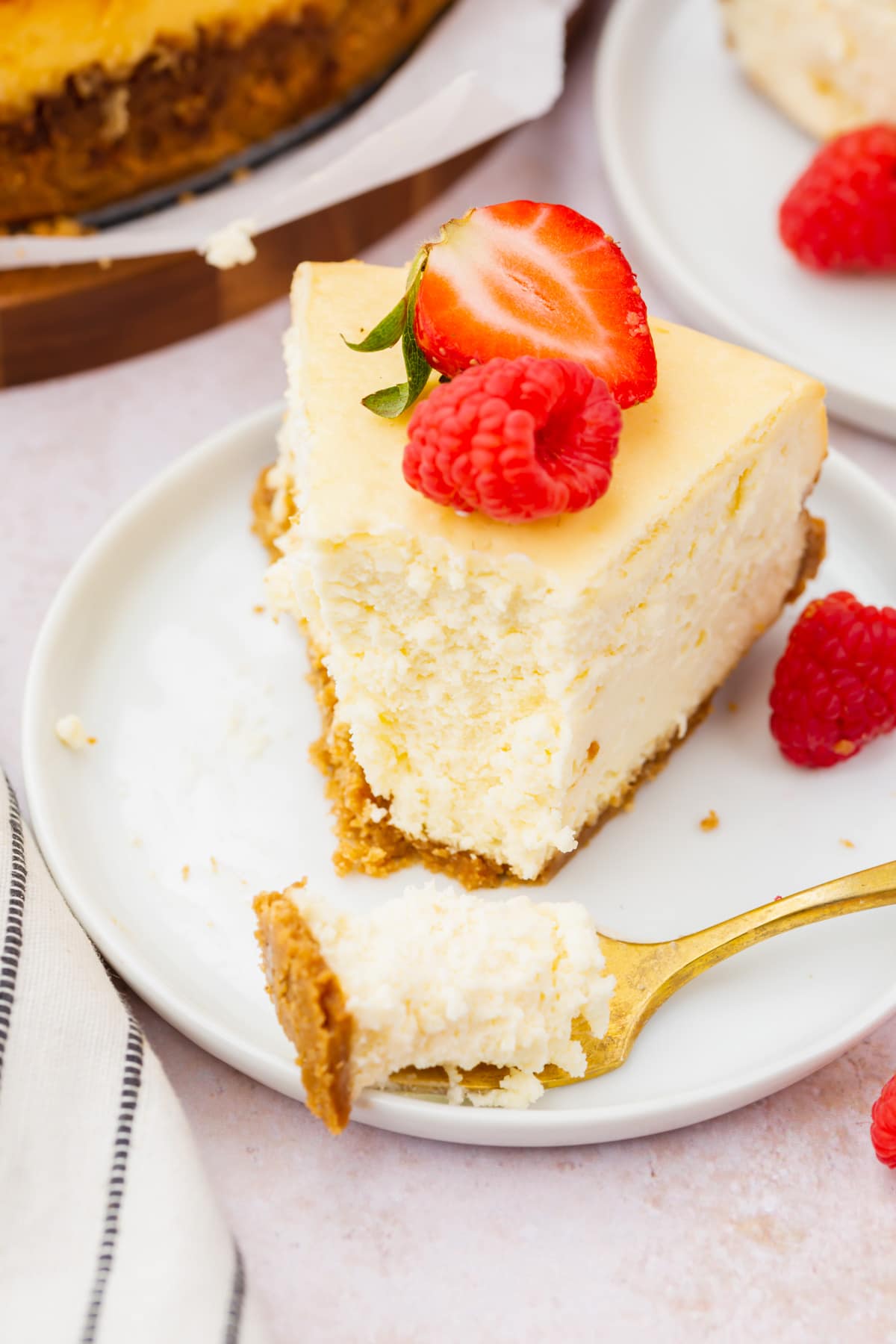
Related Recipes
- Gluten-Free Vegan Pumpkin Cheesecake
- Grain- and Gluten-Free Mini Pecan Pie Cheesecakes
- Gluten-Free Black Bottom Cupcakes
- Gluten-Free Chocolate Cake
- Gluten-Free Gingerbread Bundt Cake
Did you make this recipe?
I’d love to know! Please rate it and leave a comment below. You can also share your pictures and tag @adashofmegnut on Instagram.

Gluten-Free Cheesecake
Ingredients
For the crust:
- 1 ¾ cups gluten-free graham cracker crumbs (from an 8 oz box (256g))
- 2 tablespoons granulated sugar (28g)
- 1/4 teaspoon ground cinnamon
- 1/4 teaspoon kosher salt
- 5 tablespoons melted butter
For the filling:
- 40 oz full-fat cream cheese (five 8-oz packages, room temperature)
- 1 ½ cups granulated sugar (300g)
- 1 cup sour cream (room temperature)
- 1 tablespoon lemon juice
- 1 teaspoon lemon zest
- 2 tablespoons cornstarch (20g)
- 2 teaspoons vanilla extract
- 4 large eggs (room temperature (200g))
Instructions
- Preheat the oven to 350°F. Butter the bottom and sides of a 9-inch springform pan, then set aside. Add gluten-free graham crackers to a food processor and process until finely ground.
- Pour graham cracker crumbs into a medium sized bowl and whisk together with the granulated sugar, ground cinnamon, and salt.
- Pour the melted butter over the graham cracker mixture and stir until the crust mixture resembles wet sand.
- Press the graham cracker mixture into the bottom of the springform pan and about 1-inch up the sides. I use the bottom of a measuring cup to evenly press the graham cracker crust into the pan.
- Bake the crust at 350°F for 9-11 minutes, until the crust is lightly browned and fragrant. Remove from the oven and cool for at least 10 minutes while preparing the filling.
- To make the filling, place the cream cheese and granulated sugar in a large bowl, and beat for 1-2 minutes using an electric mixer until light and smooth.
- Add the sour cream, lemon juice, lemon zest, cornstarch, and vanilla. Still using the electric mixer, mix until completely smooth, scraping down the sides of the bowl as needed with a spatula.
- In a separate bowl or measuring cup, whisk the eggs together using a whisk or fork.
- Add half of the whisked eggs to the cream cheese mixture and mix until just incorporated using the electric mixer. Add the remaining eggs and again mix until just incorporated. Be sure not to overmix or too much air will be incorporated into the filling.
- Pour the cheesecake filling over the crust and smooth with a spatula. Place your cheesecake in the preheated oven and bake for 20 minutes at 350F. Then, lower the temperature to 250F without opening the oven door and bake for another 55-65 minutes, until the edges of the cheesecake are set, but the center 2-inches of the cheesecake is still wobbly. If you stick a thermometer into the center, the internal temperature of the cheesecake should reach 145-150F. Turn off the oven and let the cheesecake sit in the oven for an hour with the door closed.
- Remove the cheesecake from the oven. Run a knife along the edges of the cheesecake to loosen it from the pan. Let the cheesecake sit at room temperature for an hour. Once at room temperature, place the cheesecake in the refrigerator for at least 4 hours before serving.
- Remove the cheesecake from the springform pan and top with berries and chocolate sauce or serve plain. Enjoy!
Notes
- I used Kinnikinnick gluten-free graham crackers for this recipe. Any plain graham cracker will work for this crust. If you do not need your cheesecake to be gluten-free then you can use any brand.
- It is important that you make sure the cheesecake filling is completely smooth before adding the eggs. Scrape down the sides of the bowl as needed so that all of the cream cheese is properly incorporated and smooth before the egg additions.
- This recipe does not use a water bath. However, I do like to use a cake strip instead to help the cheesecake not crack. Read my tips in the post above to find out how to use cake strips and other tips to prevent your cheesecake from cracking.
- It is important to follow the cooling process in the recipe to help ensure your cheesecake does not crack. First, the cheesecake cools in the oven after cooking with the oven off and the door shut. Then, the cheesecake cools at room temperature in your kitchen. Last, the cheesecake goes into the refrigerator for 4 hours to set and cool completely. This gradual cooling process is integral to a perfect cheesecake and is not to be skipped. Planning ahead is vital, and so worth it!
- Visit the Expert Tips and FAQ sections within the post above for more tips and tricks on this recipe!


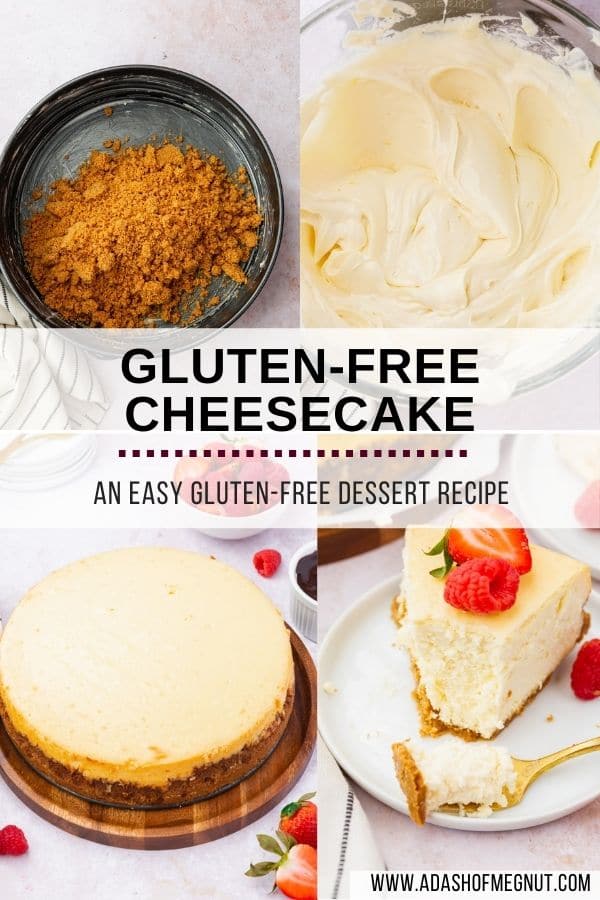
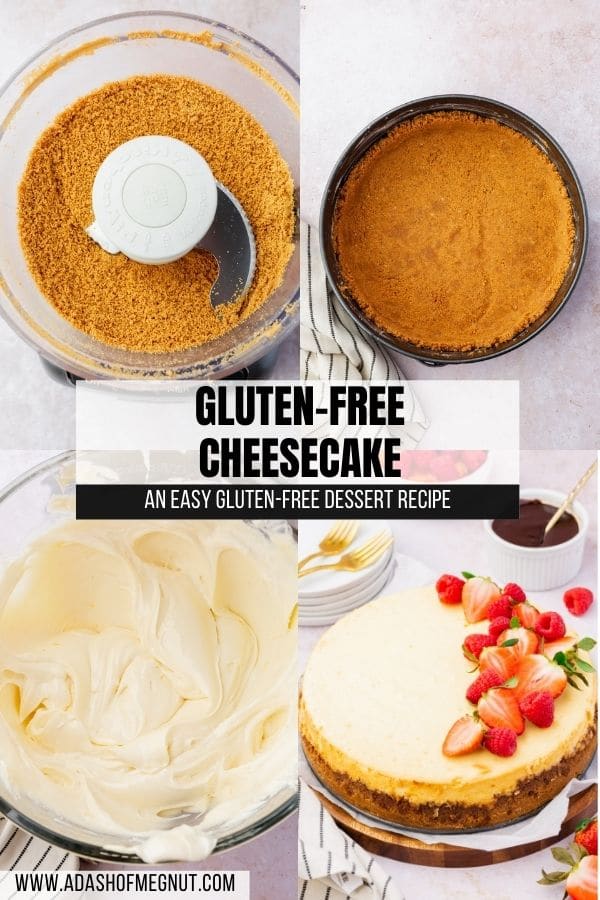
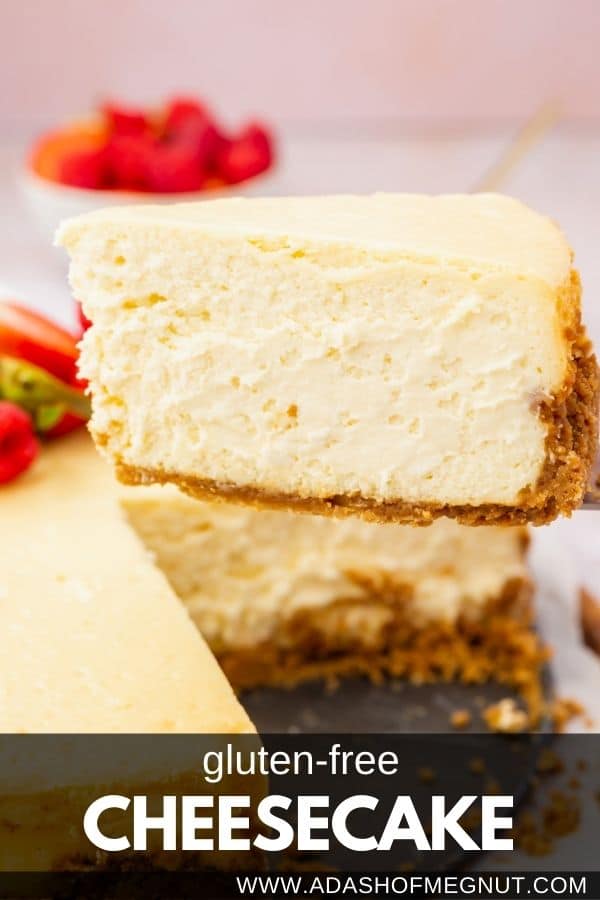
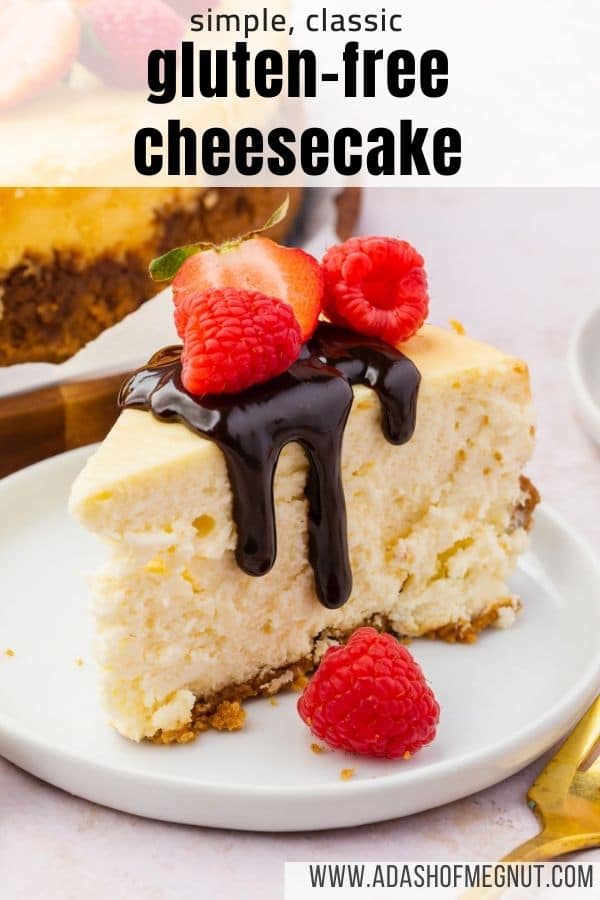
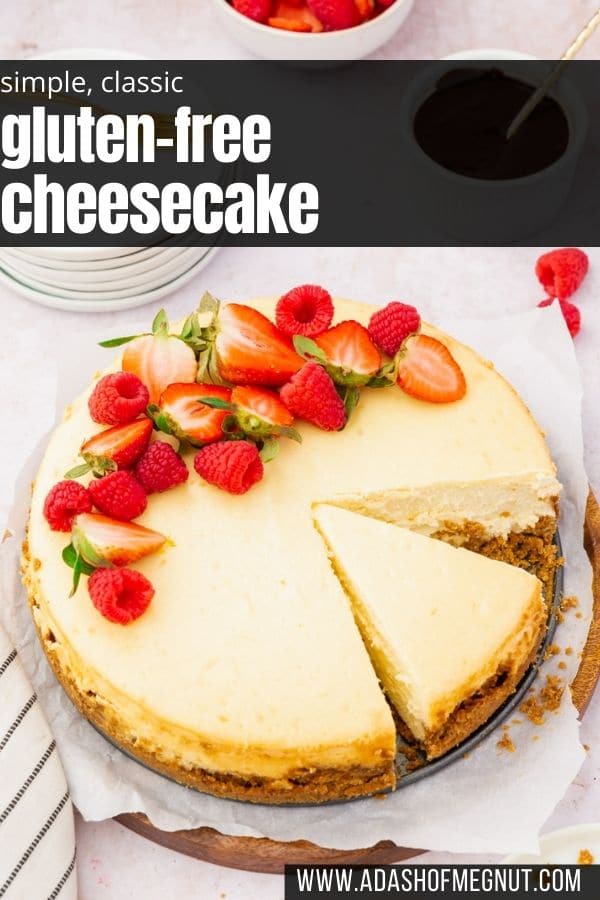
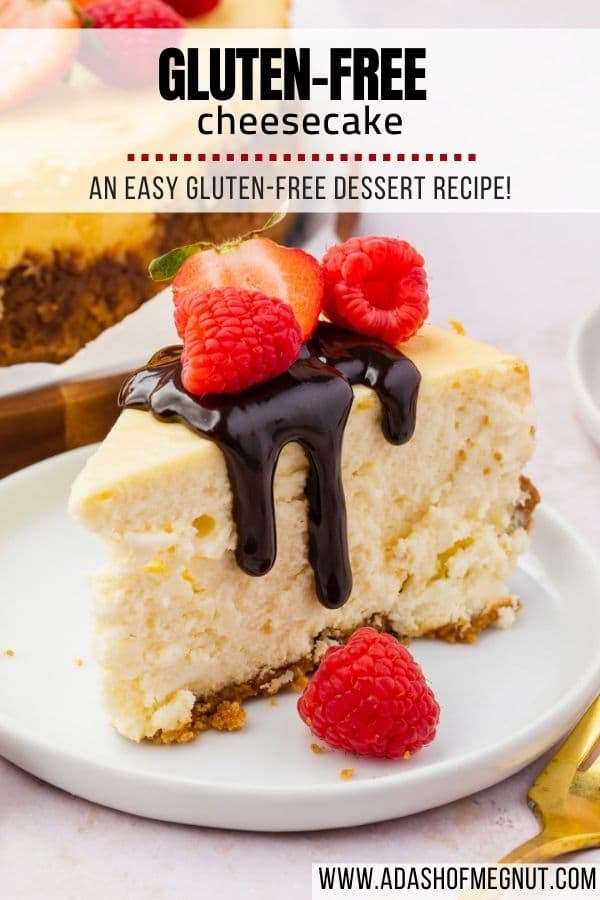
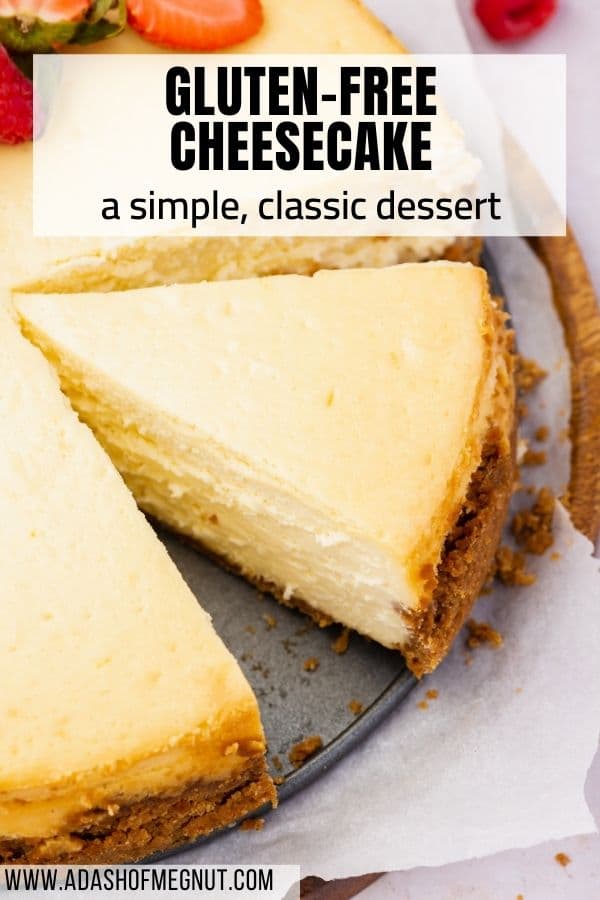
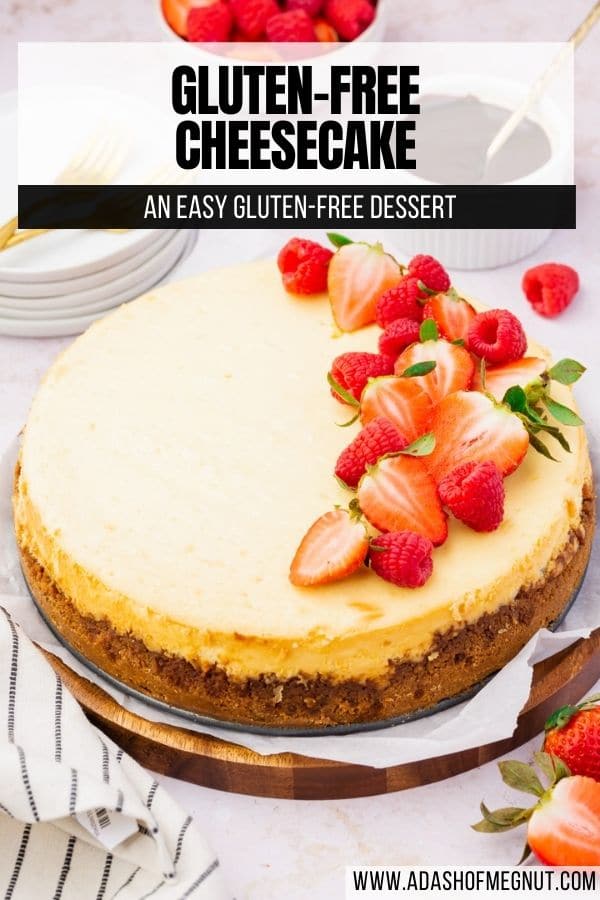
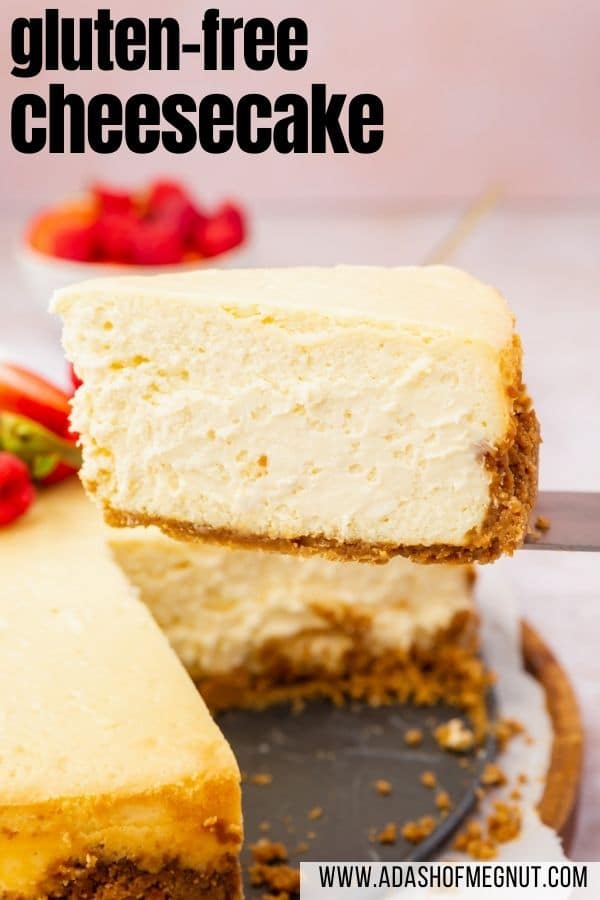

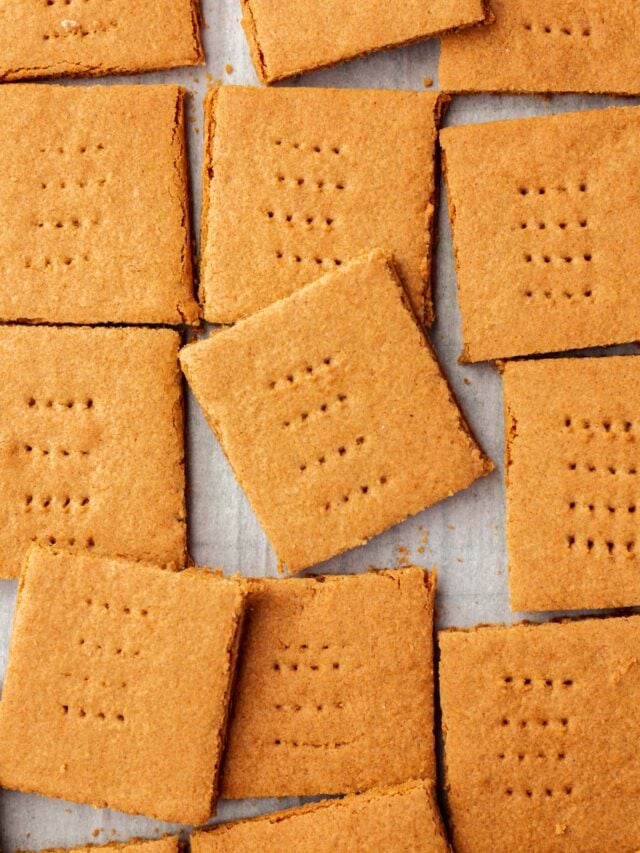
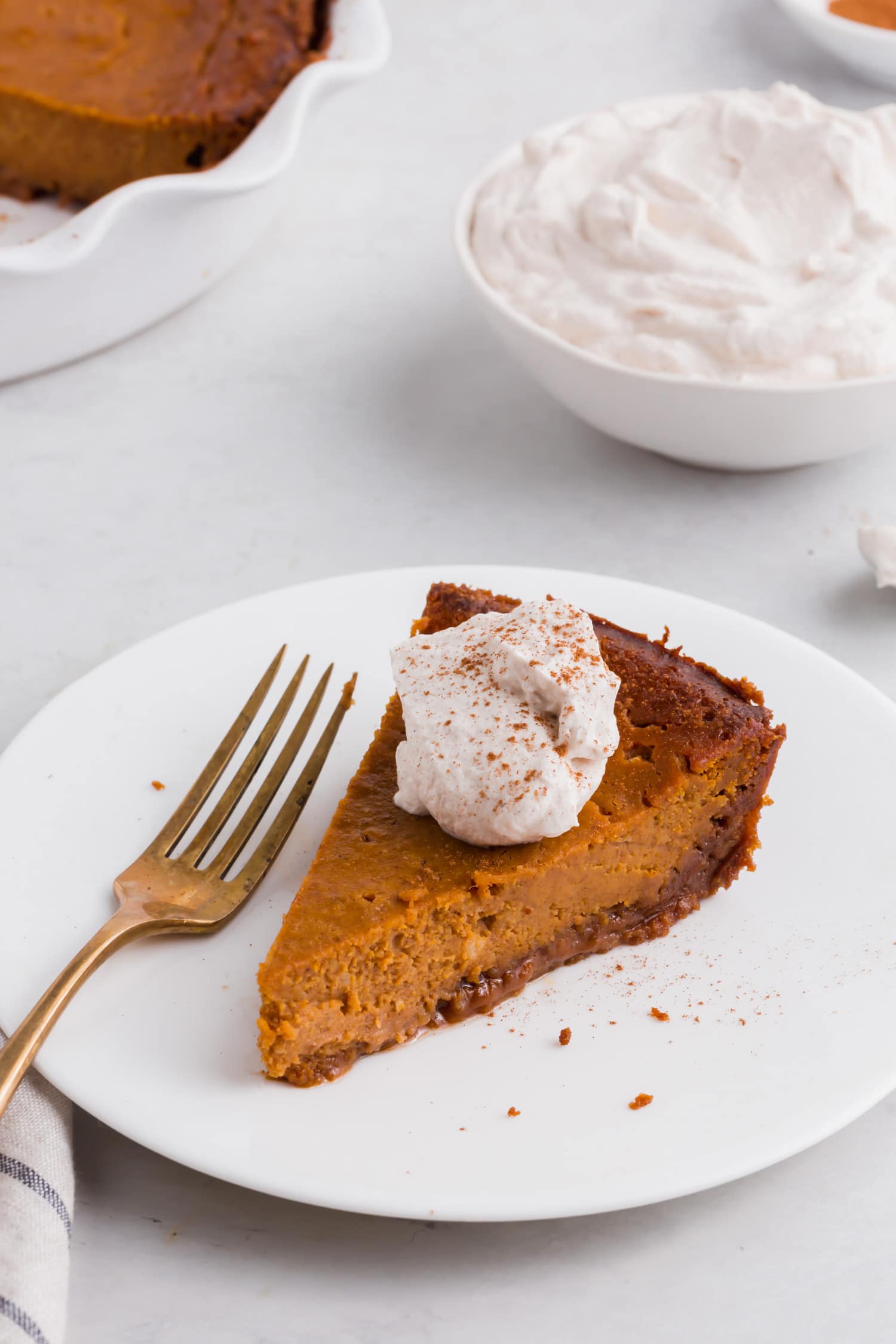
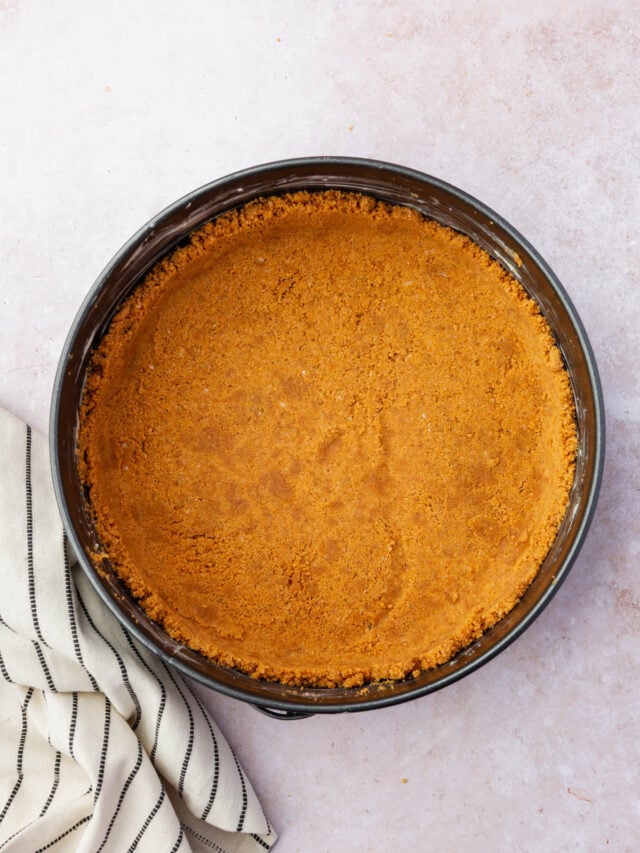
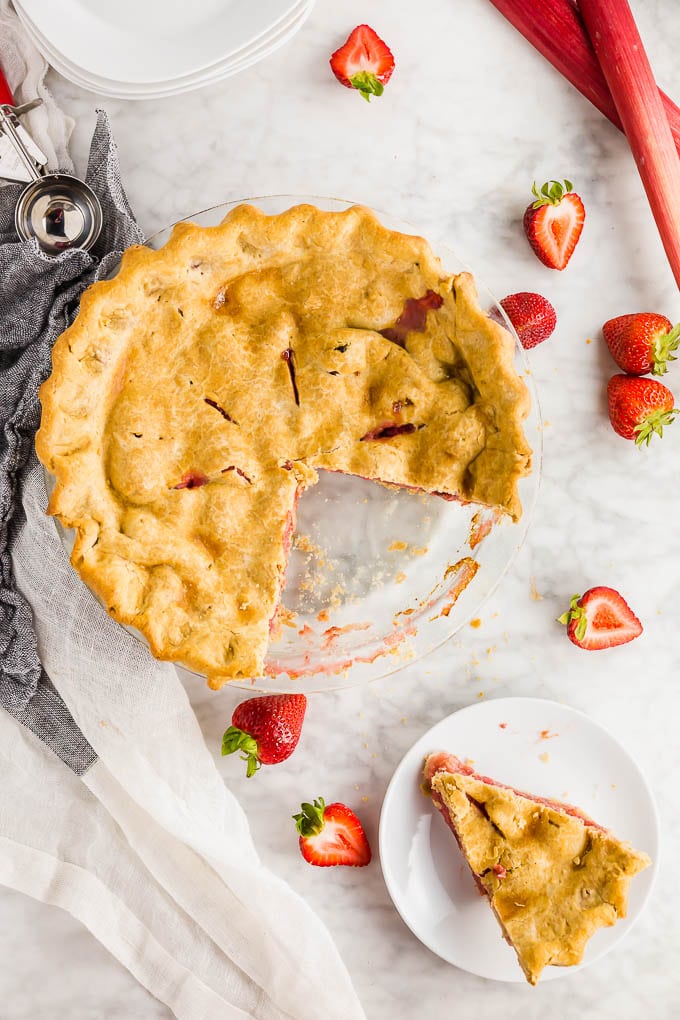

I love this cheesecake and want to make it for a party. Could I double the recipe and put it in a 9×13 pan or 2 9×9 pans? If so, how would I change cooking time? I want to have it in a square container to cut it easier and plate it on a serving tray.